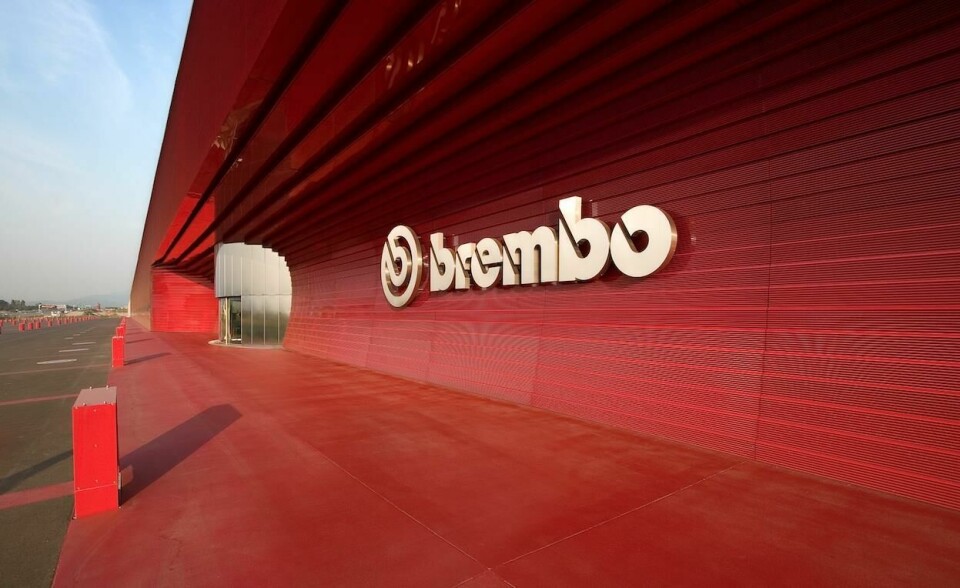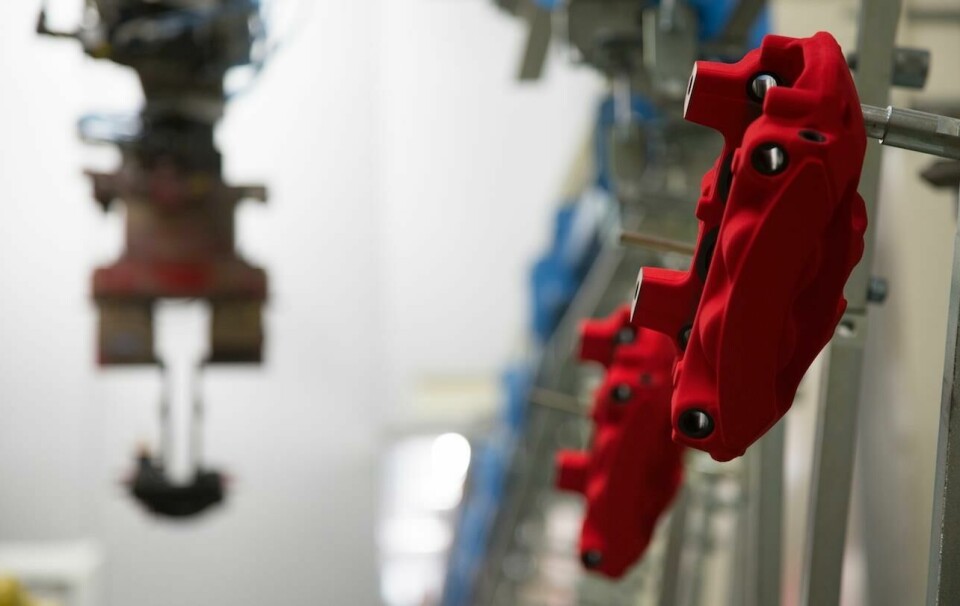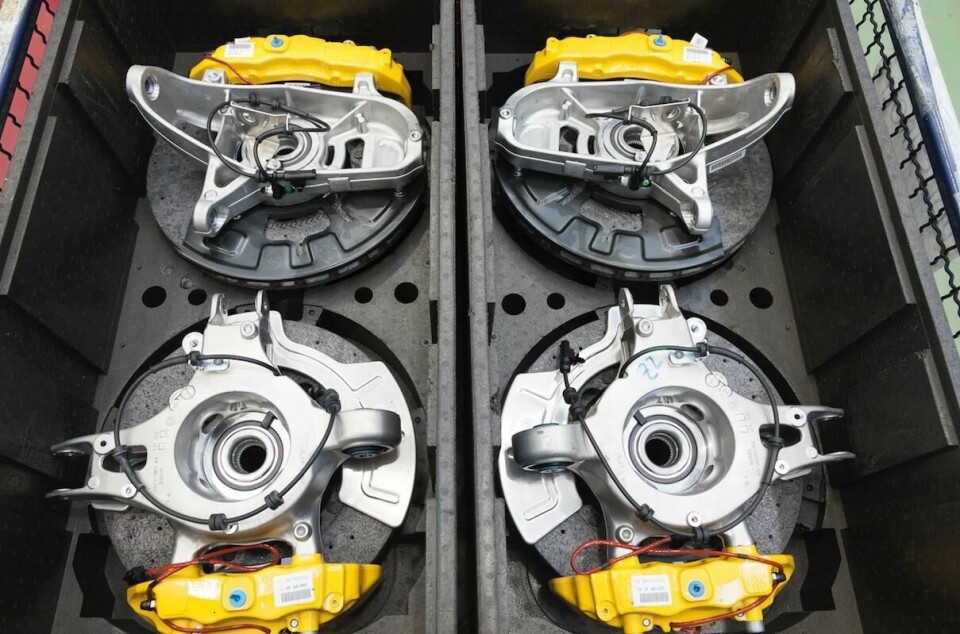Braking ground
Nick Holt visits Brembo’s Kilometro Rosso test and development facility, and its Curno production plant, to see how the company creates high quality, premium vehicle braking systems

Brembo has carved itself an enviable niche in the braking market, providing calipers, discs and now complete corner assemblies to an impressive array of luxury performance car and motorcycle producers. Equally impressive is the company’s motorsport pedigree, with teams at the highest levels across a number of categories relying on Brembo’s stopping power. Two of the company’s key sites reveal how this has been achieved and also how the company is developing new braking solutions for the e-mobility generation of vehicles.
The Kilometro Rosso Innovation District is at the heart of Brembo’s technical development and quality assurance. This campus is home to 60 diverse partners from different industries and with various skill sets and competencies; the idea being that they can come together to combine expertise and resources in a single project, outside the areas of business they might ordinarily operate in. This provides fresh input and insight into solving technical challenges. One such project saw a collaboration with a test lab for pharmaceuticals and a cement manufacturing company, in the development of an environmentally friendly friction material.

The company has developed extensive and sophisticated test protocols at its Kilometro Rosso R&D centre that cover everything from extremes of temperature and durability to noise reduction. On this last item the company has perhaps more stringent requirements than most due the premium segment vehicles its calipers and discs are fitted to. Safety and performance are obviously a priority, but drivers of Ferraris and Porsches do not want intrusive brake noise, so Brembo has developed sensitive test equipment that is mounted on key points, on both the interior and exterior of the vehicle. A rigorous road test procedure, which sees the vehicle braking from different speeds in controlled, repeatable stages, monitors the operating temperature and noise emitted from the brakes. This equipment is able to accurately pinpoint any source of noise from the brakes and the conditions under which it occurs. There are a large number of cars and motorcycles undergoing testing at any one time at the facility, including yet-to-be launched models.
Braking into the future
An important project at the R&D centre has been the development of a brake-by-wire system, which has changed the company’s position in the market. Until recently, Brembo would describe itself as a foundation company (for cars and trucks), so, not providing actuating systems or parts, such as brake boosters, master cylinders, but that is now changing. Looking to a future with electric powertrains and autonomous vehicles, the company has been working on this brake-by-wire project over the last 15 years.
The new system is a wet/dry one; the rear calipers require no brake fluid, being electro-mechanically actuated, while the front are dedicated aluminium high performance calipers, each driven by an electrohydraulic actuator. So, the brake pedal is completely decoupled, with no physical mechanical link between the brake pedal and the calipers. Instead there is a brake pedal simulator, where a sensor, reading the driver’s brake pedal input, transmits a signal to an ECU, which then drives actuators to control the front and rear calipers. This is also the first time Brembo has written its own software for an ABS and stability control algorithm.
There are two reasons for the focus on the by-wire systems, where the brake pedal is completely decoupled. Firstly, they are necessary to make the best use of regenerative braking on electric and hybrid vehicles. As the vehicle slows down the electric motors are used to recharge the batteries and that generates a certain deceleration. However, that deceleration may not be enough on its own especially for high deceleration stops, so it’s necessary to add the effect of friction braking to the regenerative braking. This needs these two braking methods to be combined in a seamless way that ensures the best use is made of regenerative braking maximising energy recuperation. The second reason is that decoupled systems are the only systems that will allow car manufacturers to move to the higher levels of automated driving.

Caliper and corner production
The Curno facility makes aluminium calipers for a number of premium OEMs, including Ferrari (Brembo are 100% fitment), Aston Martin, Porsche, Land Rover, Lamborghini and Maserati, Mercedes and BMW. Here Brembo also produces complete corner assemblies (hub, disc and caliper) for customers such as Ferrari. At this facility, the vertically integrated nature of the company’s production is clearly on display, starting with the cast parts supplied by Brembo’s Mapello foundry, delivered straight from the mould. The caliper production process is almost entirely automated with the exception of a few material handling and small-part assembly operations.
Excess material from the casting process is cleaned off the raw caliper castings, which are then fed into one of a number of automated machining cells. They are organised in order to optimise the set up, test and production of the machining centres. There are basically two machining processes in each cell; one for the internal sections, such as the piston sockets, and the other for the external areas, such as the mounting points, all of which require a precision finish. Brembo has worked with the machine supplier to develop special tooling for the machining process. In the cells, robots perform all the material handling and deburring operations.

The distinctive coloured finish on Brembo’s calipers is achieved through a number of different coating processes. Depending on the colour and specification required by the customer, some are sent to an external supplier for painting. In-house, Brembo uses both anodising and powder coating processes, again depending on the customer’s specifications. The powder coating line is a relatively recent development at Curno and features a completely automated process.
Automation in action
Although the powder coating itself is a simple operation, the processing of the calipers is more complex. The line is completely automated, a series of robots prepare the painting of the calipers in order to protect the areas not to be painted. Compared to traditional manual processes, this system allows for higher productivity and the hourly capacity necessary to produce the volumes requested by customers.
Along with the automation of the machining and assembly lines at Curno, this process highlights both the advances in the capability of automation to perform tasks where dexterity, accuracy and repeatability are key requirements, and the extent to which tier suppliers have to automate processes to meet the stringent quality, cost and volume requirements from customers. Automation also offers important flexibility when dealing with increasingly volatile vehicle markets and varying parts volumes.



